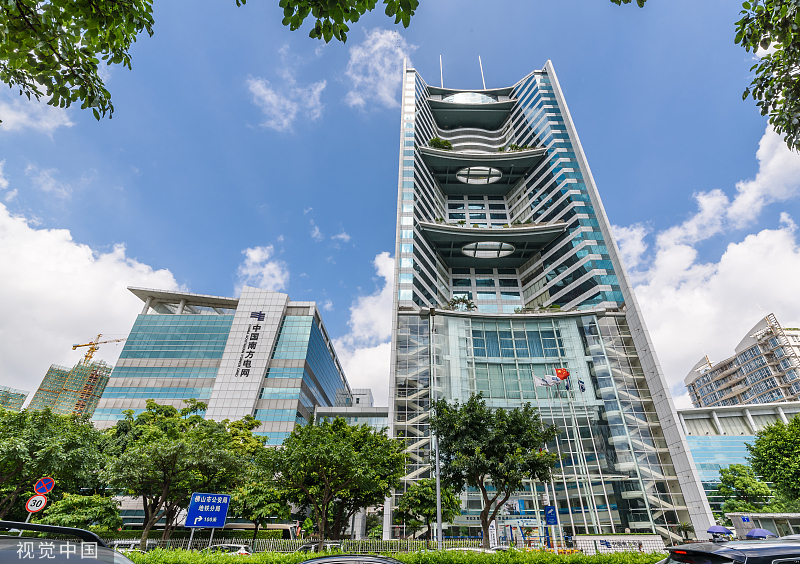New grid projects to power a greener GBA


The High Voltage Direct Current Transmission (HVDC) back-to-back project in the Guangdong-Hong Kong-Macao Greater Bay Area has been playing a key role in promoting local low carbon development and green energy transition by ensuring sufficient steady green power in the region.
The project, which adopts the world's most advanced flexible direct current technology, was put into operation on May 25. By disintegrating a big power network into several independent smaller-area networks that could support each other, the deployment of smarter power grids can help prevent blackouts, said its operator China Southern Power Grid.
It will also better consume clean energy including wind and solar power, while solving some of the challenges faced by power networks today, including inadequate interconnections with neighboring regions and an imbalance between production and consumption, it said.
The improved power network will significantly lift power supply and power allocation capacity of the power network in Guangdong province. It is expected the province will transmit no less than 188.3 billion kilowatt-hours of power to the western regions of the country in 2022, it said.
The operator's business covers five areas in the country-Guangdong, Yunnan, Guizhou and Hainan provinces and the Guangxi Zhuang autonomous region.
The project will allow several power grids to operate without interfering with each other while supporting each other in case of emergencies such as large-scale blackouts, said Pang Peng, general manager of the Guangdong Power Grid Company's infrastructure department.
He expects the power supply capacity in the Guangdong-Hong Kong-Macao Greater Bay Area will increase by 80 percent when all of the HVDC projects are put into operation by the end of 2023.
According to China Southern Power Grid, the Guangdong-Hong Kong-Macao Greater Bay Area is where the power load is most concentrated in South China, while the Pearl River Delta region accounts for 77 percent of the total power load in Guangdong province.
On the other hand, as Guangdong has also been stepping up offshore wind power development in recent years, it will be more challenging for the local power grid network to absorb all the green but intermittent power.
As an economic powerhouse, Guangdong plans to start the construction of offshore wind farms with a total installed capacity of 12 million kilowatts during the 14th Five-Year Plan period (2021-25) and put half of them into operation by the end of 2025.
Connecting the flexible direct current back-to-back project of different regional power grids will further ensure a steady operation of the power network in Guangdong, especially when its power network now faces complex intermittent power flows caused by the transition from fossil-based fuels to zero-carbon resources, it said.
Wang Liuhuo, manager of the Guangdong Power Grid Company's infrastructure department, said as many as 200 enterprises are involved with the project in the GBA. In the power grid equipment area alone, the engineering construction will encourage the upstream and downstream supply chain up to 8 billion yuan ($1.2 billion), he said.
China Southern Grid, one of the country's two major power grids, has been stepping up the construction of smart grids in recent years, as aging infrastructure and complex intermittent power flows are making the need to modernize power grids more critical.
Using the internet of things and other technologies, smart grids provide real-time knowledge of the status of the generation-consumption balance and behavior of the grid, helping to instantly optimize available resources and flexibilities, it said.
The company vowed to invest 670 billion yuan in grid network construction during the 14th Five-Year Plan period to ensure power supply stability and boost green power consumption, which will be used in clean energy power transmission, intelligent power distribution systems and smart power consumption, to push forward the construction of a digital and modern network with new energy as the mainstay.
The planned investment in the grid network during the 14th Five-Year Plan period, which is 33 percent higher than the last plan, accounts for 48 percent of the company's total investment. It also plans to increase its percentage of non-fossil energy power generation to 60 percent by 2025 to around 100 million kW.
Wei Hanyang, a power market analyst at research firm BloombergNEF, said China's major grid network companies had been stepping up the digitalization of grid networks during the 13th Five-Year Plan period (2016-20), while he expects the transformation will further accelerate during the 2021-25 period.
The acceleration will not only ensure sufficient energy supply but also provide more green power in the energy mix of the country, leading to a robust grid-network structure and greater use of transmission channels, he said.




































